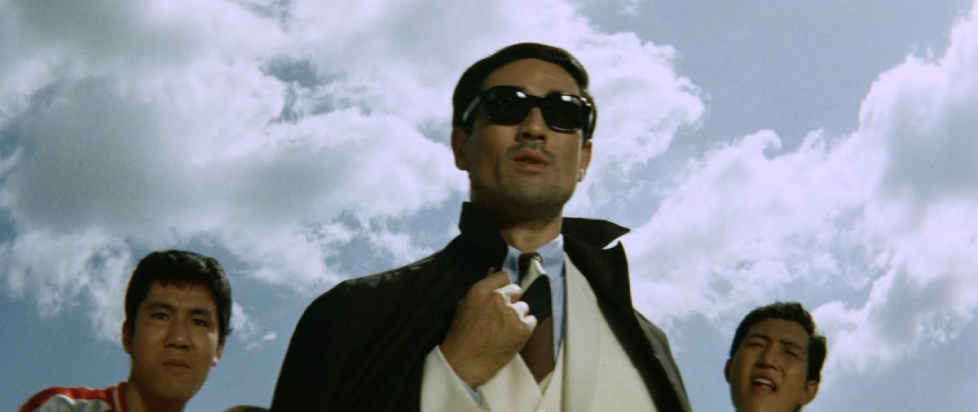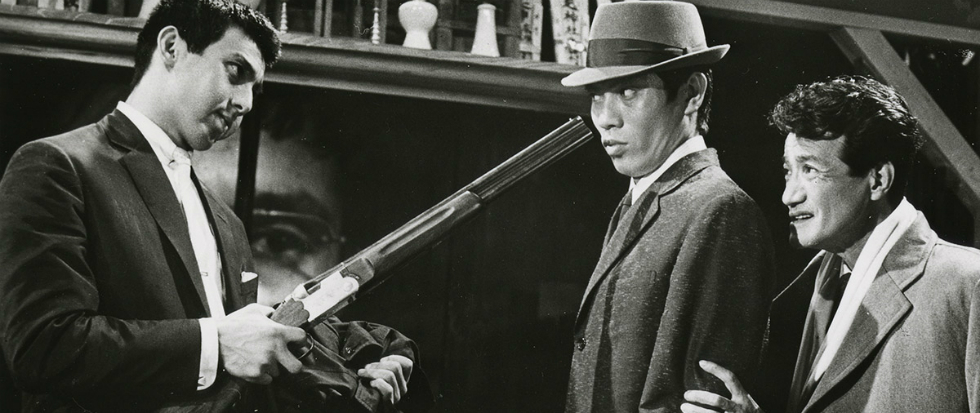
The Place That Is Nowhere: Abashiri Prison 1-3 from Eureka
I watch a lot of movies and sometimes it can be tempting to think that I know quite a lot about them. Then, something comes along and reminds me that, however much I may know, it’s still just a drop in the bucket. Such is the case with Prison Walls: Abashiri Prison 1-3 from Eureka, a collection of the first three of Toei’s popular Abashiri Prison series.
I say “first three” because there are literally eighteen movies in the series, released between 1965 and 1972, all starring Ken Takakura. The first nine are directed by “King of Cult” Teruo Ishii, who I have mentioned before. Beginning in 1968, Ishii left the project and the later films were released under the title “New Abashiri Prison.”
I’m telling you all of this as though I knew it, but the fact is that I am just looking it up online. I had never heard of Abashiri Prison prior to getting a copy of Prison Walls from Eureka for review. I knew nothing about the series, had never heard its famous theme song, and, in fact, didn’t even know that Abashiri Prison is a real place, the northernmost prison in Japan, originally built to hold political prisoners in snowy Hokkaido.
Which is all to say that I am coming to these movies from a place of ignorance, and if we are to learn about them here, we will be learning together…
“I hope we make it to the last stop.” – Abashiri Prison (1965)
The Gangster Film Reader, edited by Alain Silver and James Ursini, argues that the original Abashiri Prison film “was the first great yakuza commercial hit,” helping to “legitimize” the genre and paving the way for an entire cottage industry of yakuza films. This despite the fact that it isn’t really much of one, at least, not as we would later come to understand them.
I say that but, honestly, yakuza films are one of the many aforementioned blind spots in my cinematic knowledge. I’ve seen a few of the “classics,” but nowhere near all of even those, and my understanding of what a yakuza film is like is filtered through decades of pop cultural osmosis, rather than much in the way of direct exposure. Nonetheless, though Ken Takakura’s Shinichi Tachibana is a member of the yakuza – albeit an ultimately good-hearted one – there are only a few scenes that deal directly with that in the film.
Abashiri Prison was adapted from the 1956 novel by Hajime Ito, based on his own experiences behind those very real prison walls. It had already been filmed once before, in 1959. However, Teruo Ishii didn’t want to tell the same story that the novel had told, calling it “too cheesy – it was just a melodrama.” Instead, he convinced Toei to let him do the film as a remake of the 1958 American film The Defiant Ones.
It takes a long time for Abashiri Prison to get to that Defiant Ones logline, though. And there is plenty of melodrama along the way. Once Tachibana and a brutal prisoner named Gonda have leapt off a truck into the snow while handcuffed together, the film is already more than half over. And despite Tachibana’s pity for Gonda by the end, there is considerably less time for them to get to know and respect one another than in the film’s American predecessor. Instead, the star of the show becomes Abashiri itself, and the frozen landscape that surrounds it, which makes escape seem impossible, even long after the inmates are outside the prison walls.

“You can’t value money over people’s lives.” – Another Abashiri Prison Story (1965)
It doesn’t take much reading online to find people speculating that the second Abashiri Prison film – released within months of the first – was a “rewrite of something they had laying around already, slapping on the same character names and writing some lines of dialogue that tenuously connect it to the first film under orders from the powers that be,” to quote just one review on Letterboxd. And it’s easy to see why. Despite recycling much of the cast and crew, Abashiri Prison 2 has almost nothing in common with its predecessor.
Shot in color and set in warmer climes, it follows Tachibana and some of his former cellmates who have been released only to find themselves unexpectedly in possession of an imitation algae ball filled with diamonds from a bank robbery, with the police and the actual thieves hot on their trails. It’s the kind of caper plot that would have felt right at home in any of dozens of movies in the ‘60s and ‘70s, the sort that The Simpsons parodied with their “Thousand Dollar Movie,” Goodtime Slim, Uncle Doobie, and the Great Frisco Freakout.
Aside from Tachibana and his sidekick, there is no real reason for most of the other characters to be there. The villain happens to be Yoda (Toru Abe), a heavy from the first film. Even old timer Onitora inexplicably shows up to once more bail out Tachibana, this time in a gambling den.
The unlikely thematic link between Abashiri Prison and its tonally and narratively distinct sequel is in its regard for characters who would probably be treated much worse in most movies. In this case, that comes mainly in the form of one of Abashiri Prison 2’s raft of new faces. Yoko Mihara’s Michiko is a stripper with no shortage of less-than-noble traits. Shallow, emasculating, a compulsive gambler and heavy drinker, she is also a bad mother who tells her husband (as he is toting around their infant son) that “we aren’t in a position to be good parents.”
She could easily be the butt of the joke – and she is, in fact, the butt of several – but the film actually has surprising sympathy for her, and the plight that she and her family are in, as demonstrated partly when the film’s climax is catalyzed by her child needing some sort of medical treatment that they can’t afford, spurring soft-hearted Tachibana to once again intercede.

“A man gets mad only once in a lifetime.” – Abashiri Prison: Saga of Homesickness (1965)
According to Wikipedia (referencing Mark Schilling’s The Yakuza Movie Book), when asked why the third film in the Abashiri series was set in Nagasaki, far from the eponymous prison, “Ishii explained that when he told Toei he could not make another installment in the series yet because it was not winter, they remarked that it did not matter and he could shoot anything as long as the theme song was on the soundtrack.”
That tune, which dominated much of the first movie, was supposedly a traditional folk song sung by prisoners in the real Abashiri Prison. The story goes that Teruo Ishii first heard it in a television documentary and used a tape recorder to have the TV station identify it for him. The version of the song heard in all three of these Abashiri Prison movies (and who knows how many of their sequels) is actually sung by Ken Takakura himself, and it’s used to good effect here, just as it was the first time around.
That same Wikipedia article also quotes Schilling as saying that “Japanese critics and fans widely regard the third installment” as “the best in the franchise.” The same seems to be true of Western critics and fans, if Letterboxd is any indication. And it is once again easy to see why. If nothing else, Abashiri Prison 3 is certainly a better sequel to the first film than the second film was.
Most of the cast is back again, some of them playing new characters and others reprising old ones, but the storyline is introduced a lot more gracefully, and the tonal inconsistencies are not as jarring. The Blu-ray from Eureka opens with a warning that an Asian actor plays a character in blackface. What it doesn’t warn you is that the character in question is a little girl, a frequent runaway from a nearby orphanage played in (yes, deeply distracting) blackface by Margaret Hayashida, who has no other screen credits on IMDb.
The blackface thing is a bummer for a number of reasons, but one is certainly that, while the subplot with the little girl is pretty rote on its own, the bits about how she is treated differently because of her appearance, and Tachibana reassuring her that they are actually exactly alike, are some of the better examples of the kind heart that seems to define these films as a whole.
Unlike the second installment, Abashiri Prison 3 brings in elements of Tachibana’s backstory, as he returns to his hometown to visit his mother’s grave, reunites with his old gang, and tries to make amends for the act that landed him in Abashiri Prison in the first place, although events will conspire, of course, to bring him inevitably back to something very like where he started from.
———
Orrin Grey is a writer, editor, game designer, and amateur film scholar who loves to write about monsters, movies, and monster movies. He’s the author of several spooky books, including How to See Ghosts & Other Figments. You can find him online at orringrey.com.



